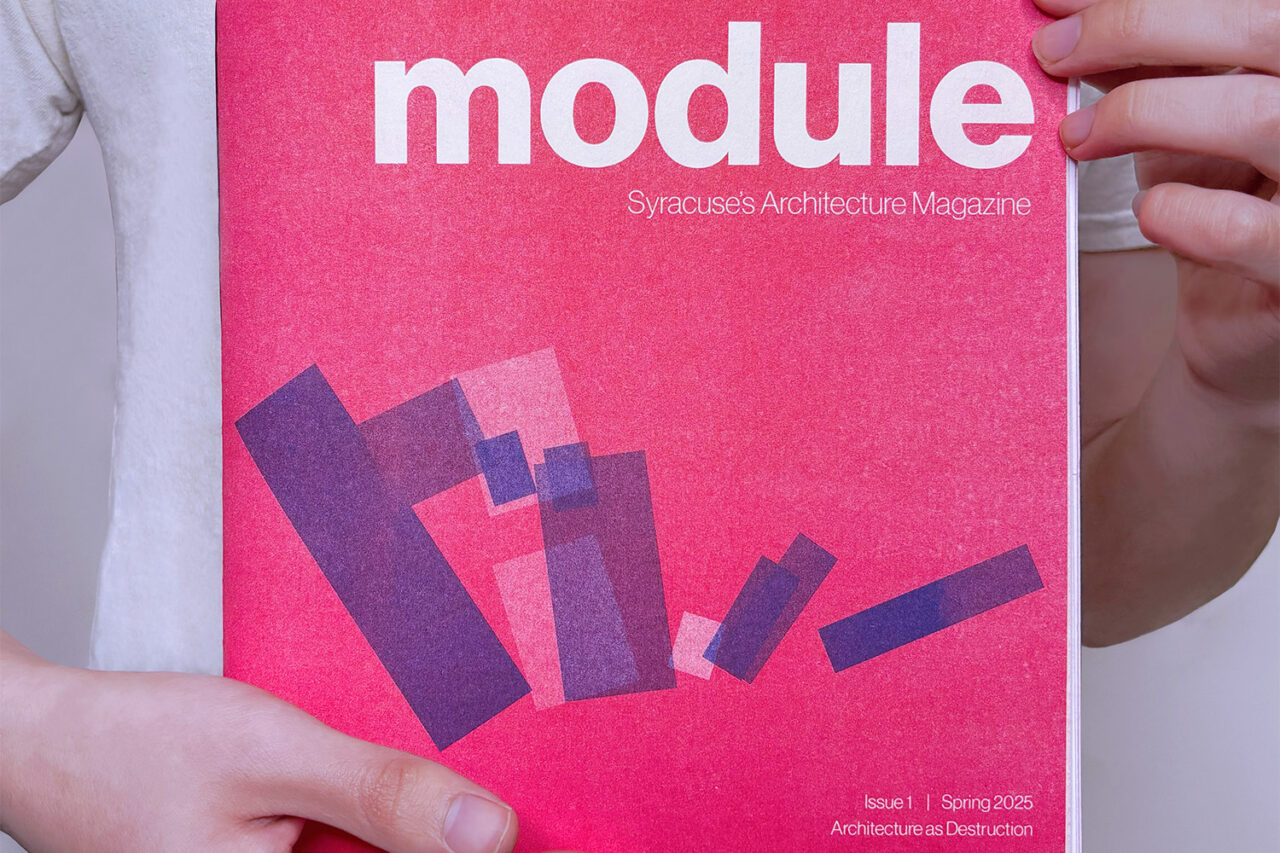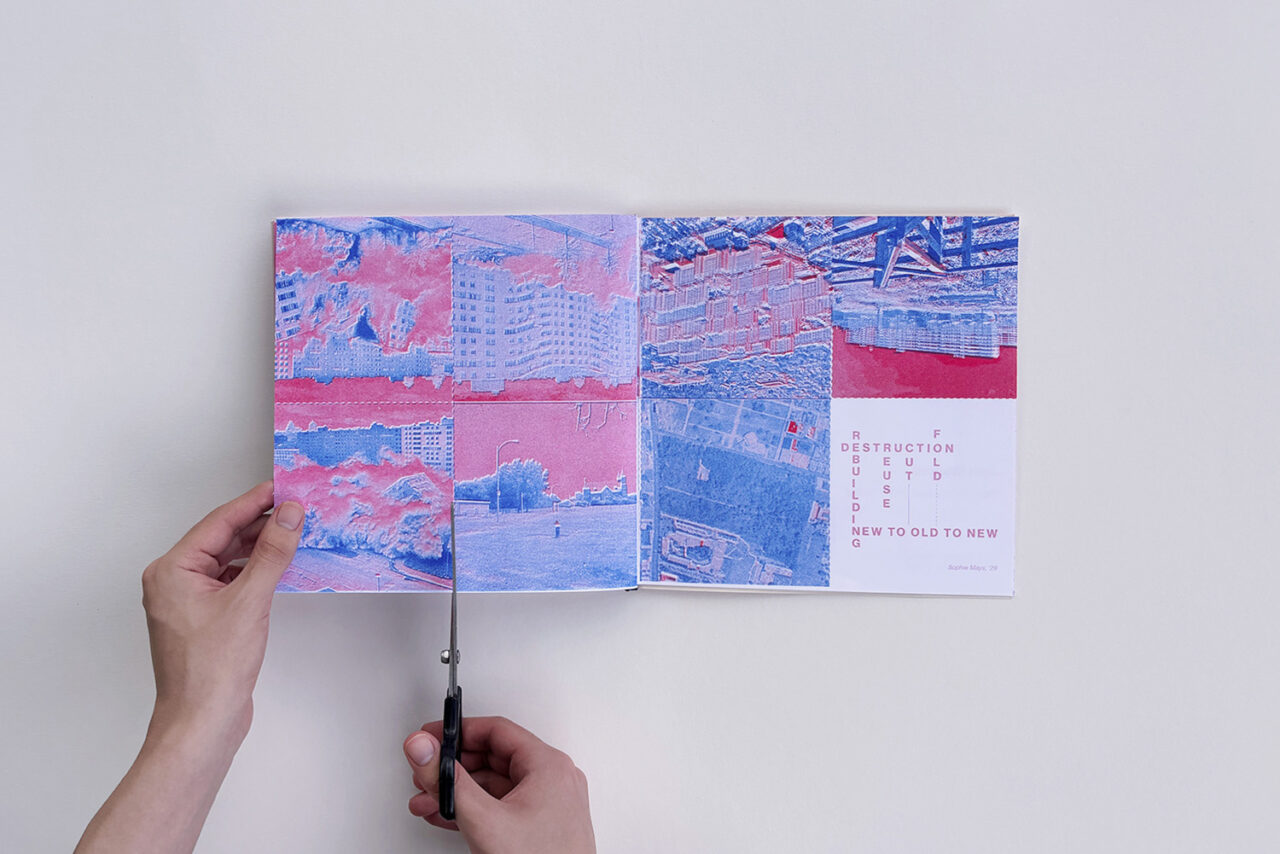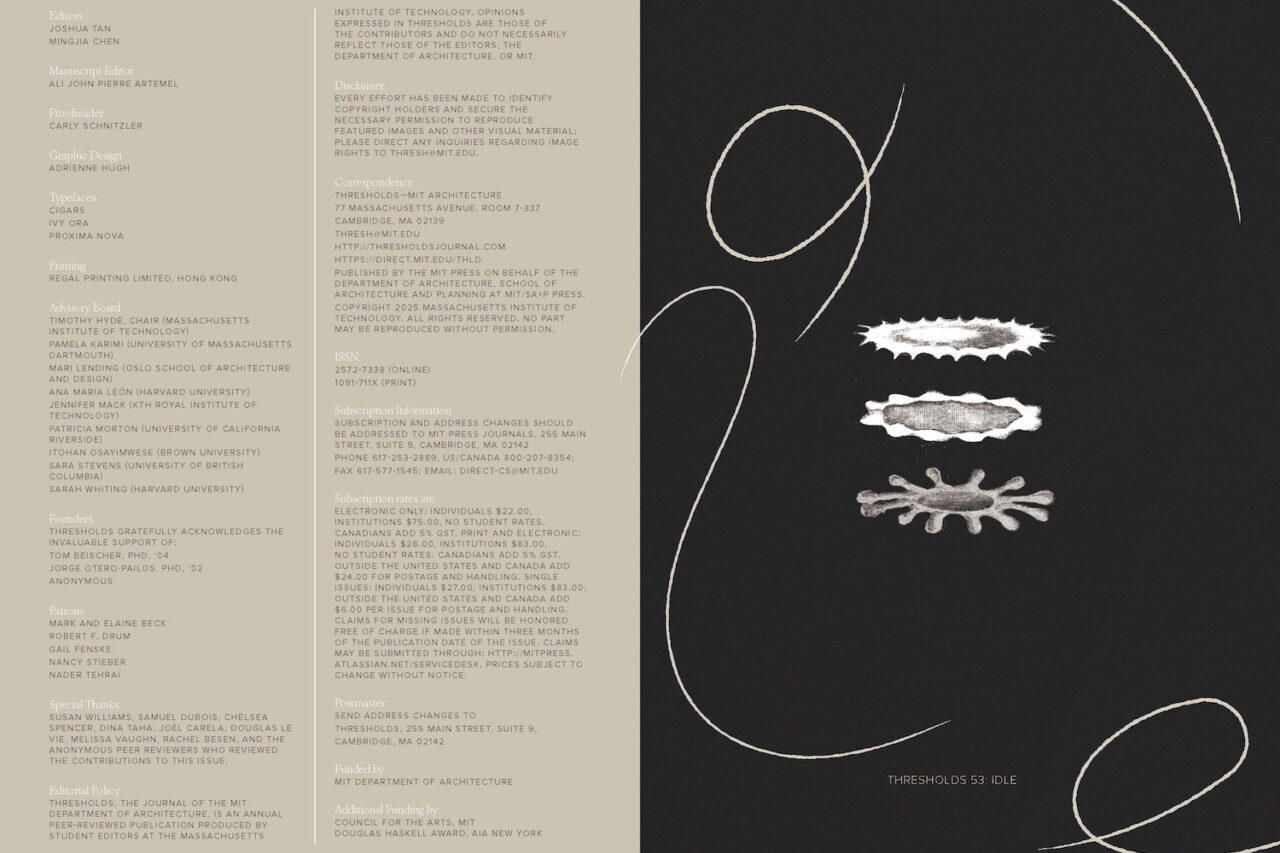by Center for Architecture
AIA New York and the Center for Architecture are proud to announce the 2025 recipients of the Douglas Haskell Award for Student Journals. The Haskell Award was founded to encourage student journalism on architecture, planning, and related subjects and to foster regard for intelligent criticism among future professionals. The award is named for architectural journalist and editor Douglas Haskell, editor of Architectural Forum from 1949 to 1964, where he was very influential in stopping the demolition of Grand Central Station. This year, four student-led journals of architecture and design were awarded prizes.
2025 Award Recipients:
Telesis Volume VI: The Essence, University of Oklahoma, Gibbs College of Architecture ($1,500)
Telesis is the annual student journal of the Christopher C. Gibbs College of Architecture at the University of Oklahoma. Conceived, edited, and designed entirely by students, Telesis provides a platform for emerging voices to engage the most pressing questions in architecture and design today. It supports critical inquiry, creative risk-taking, and public dialogue—anchoring design practice in cultural, ethical, and environmental contexts.
Revived in recent years as a continuation of the college’s experimental student journals from the 1970s, Telesis remains unapologetically student-led. Each volume centers on a theme that invites broad interpretation and personal reflection. The sixth and most recent volume, “The Essence,” poses a central question: In an era increasingly shaped by digital saturation, algorithmic aesthetics, and globalized design culture, what remains essential in architecture? What grounds our practice? What is worth preserving?
“The Essence” explores these questions not as a search for universal truth, but as an invitation to rediscover what truly moves and centers us as designers. In a time marked by climate crisis, post-pandemic disorientation, and AI-generated imagery, the journal calls for a re-centering of architectural thinking. Contributors reflect on the value of material honesty, presence, and human connection. “The Essence” proposes that architecture is not merely about producing objects, but about creating forms and spaces that resonate, relate, and endure.
Telesis is more than a publication—it is a space for reflection, experimentation, and student-led authorship. It affirms that architectural discourse should not be reserved for established voices alone, but shaped actively by those who will carry the field forward.
Telesis Volume VI: The Essence Editors: Felipe Flores, Trey London, and Yousef Haghighi
Faculty Advisor: Angela Person
Module Magazine, Issue 1, Syracuse University, School of Architecture ($500)
Founded in 2025, Module is a biannual architectural magazine that provides an outlet for emerging undergraduate student authors and artists at the Syracuse University School of Architecture to engage in critical theoretical conversations on architecture. Written, edited, and designed by architecture students passionate about advancing academic discourse in architecture and its related disciplines, Module spotlights diverse voices, featuring an extensive range of scholarship from creative essays, interviews, and work showcases to original artwork and photography. In its inaugural edition released in the spring of 2025, Module invited students and faculty to probe the complex nature of destruction and its vital role in architectural creation, printing and distributing 60 issues during its first launch event.
Architecture has a long history of destruction and reformation, causing controversy both in its time and beyond. Destruction can act as a positive metamorphosis or as a tool of the unrelenting politics of progress, fundamentally reshaping landscapes and defining new sites of creation. To destroy is to decide what is of value, and in that lies an inherently controversial act. The ongoing demolition of buildings across campus to pave the way forward for new student dormitories and the active I-81 demolition project underscores how near and familiar the issue of destruction has become to the greater Syracuse community, while the storied and complicated history of destruction, renewal, and reformation in architecture provides a rich context. This issue of Module seeks to reshift our perspective of creation by addressing its intrinsic relation to destruction at various scales.
Striving to push the boundaries of architectural journalism, Module boldly reimagines the traditional print magazine through graphical experimentation and unconventional book design. Bound solely by rubber bands, the first edition of Module is left radically reformed as readers deconstruct and disassemble its pages—effectively destroying the magazine. Engaging readers actively in the dialogue of the publication, Module creatively grapples with the central issue of destruction through visual methods and tactile means in addition to the written word. By incorporating interactive elements in its book design, Module uniquely engages with the broader community, opening up opportunities for creative expression. In the final pages of Module’s first issue, readers engage in acts of destruction by cutting and folding an original artwork, activating the surface of the page as a site of critical discourse where play and imagination emerge. Ultimately, Module advocates for the print medium through in-house risograph printing and handcrafted binding, forming a distinct graphic identity while allowing for unique narrative exploration and creative control.
Module Magazine, Issue 1 Editors: Isabela Santana and Zach Ehrenreich
Faculty Advisor: Edgar Rodriguez
Thresholds 53: Idle, Massachusetts Institute of Technology, Department of Architecture ($500)
Funded by Jorge Otero-Pailos and Thomas Beischer, Thresholds is the annual student-edited, peer-reviewed journal produced by the MIT Department of Architecture since 1992. It is interdisciplinary in nature and in aim, featuring submissions across fine arts, design, graphics, media arts and sciences, film, photography, architecture and theory from emerging and established artists and architects, scholars and practitioners. Each year, new editors for the journal curate an issue around a chosen theme, in recent years, themes have ranged from Heat to Disappearance, Idle(ness) to Record(ing). The breadth of disciplines represented in submissions and thematic curation has led to reception that extends well beyond MIT. As it is distributed by MIT Press, the readership of Thresholds is greater than might be expected of a student journal. Distribution is a significant expense to the journal, particularly at a time when funding across academic departments and initiatives is under heightened scrutiny, but a priority in its continued resonance within academic and professional inquiry into the future of architecture. Presently, Thresholds is held in over 150 university libraries domestically and internationally. It is published once a year online and in print, with approximately 1,000 copies. Last year, Joshua Tan (PhD in History, Theory, and Criticism of Architecture) and Mingjia Chen (M.Arch + MCP) co-edited Thresholds 53: Idle which aims to unravel how art and architecture have historically engaged, harnessed, or resisted the concept of idleness across different geographies and in different historical periods.
Thresholds Journal typically receives 100-200 submissions. Issue 53: Disappearance ultimately selected and carefully edited 15 scholarly articles, creative essays and visual submissions for publication. Each edition publishes a mix of work from professors, students, and practitioners. Issue 53 features individual work authored by seven students at the time of the Open Call, namely Tejumola Bayowa (M.Arch, MIT), Erika Brandl (PhD, University of Bergen), Hana Cohn (MLA, GSD), Diana Guo (PhD, GSAPP), Lauren Gideonse (M.Arch, MIT), Manar Moursi (PhD, MIT), and Pauline Shongov (PhD, Harvard). They share amongst themselves four peer-reviewed articles, one index, one creative essay, and one creative project.
Thresholds 54: Record invited submissions on records intentional and incidental, recording active and passive asking, between the records the team creates and the ones they inherit, is there a productive space for them to intervene in the inevitability of our trace? Thresholds received approximately 150 submissions, representing a wide range of disciplinary and geographic specializations.
Thresholds 53: Idle Editors: Hana Meihan Davis, M.Arch ‘26, MIT and Bridget Peak, SMArchS ‘26, MIT
DATUM NO. 15 Rot, Iowa State University, Department of Architecture ($500)
DATUM is a journal of architecture founded and edited by students at Iowa State University. The publication seeks to manifest and catalog DATUM’S community of discussion and act as a platform for further inquiry and critique. Each year, members of the College of Design, consisting of mostly architecture students, organize a publication around a central theme they find misrepresented, neglected, or requiring new definitions and further examinations. This theme is a product of many discussions, collage exercises, charrettes, and a unanimous voting system to generate a theme with member’s full approval.
DATUM, although a small club, produces one hundred books to gift supporters, staff, guest lecturers, and the team who collaborated on the journal. The publication aims to allow students an outlet unregulated by faculty input and create personal meaning into topics in which they desire to expand their knowledge and inject their creativity.
This year’s theme of discussion was ROT. The team sought to understand an unknown intersection between life and death as understood by the decomposition of a material world often characterized by fungi and death. However, from an architectural perspective, there may be a shift of occupation in a society of decay. While rot deconstructs, it gives way to reconstruction. DATUM finds that the opportunity to rot is an opportunity to be reborn.
DATUM NO. 15 Rot Editors: Meredith Petellin and Grace Morhardt
Faculty Advisor: Firat Erdim







